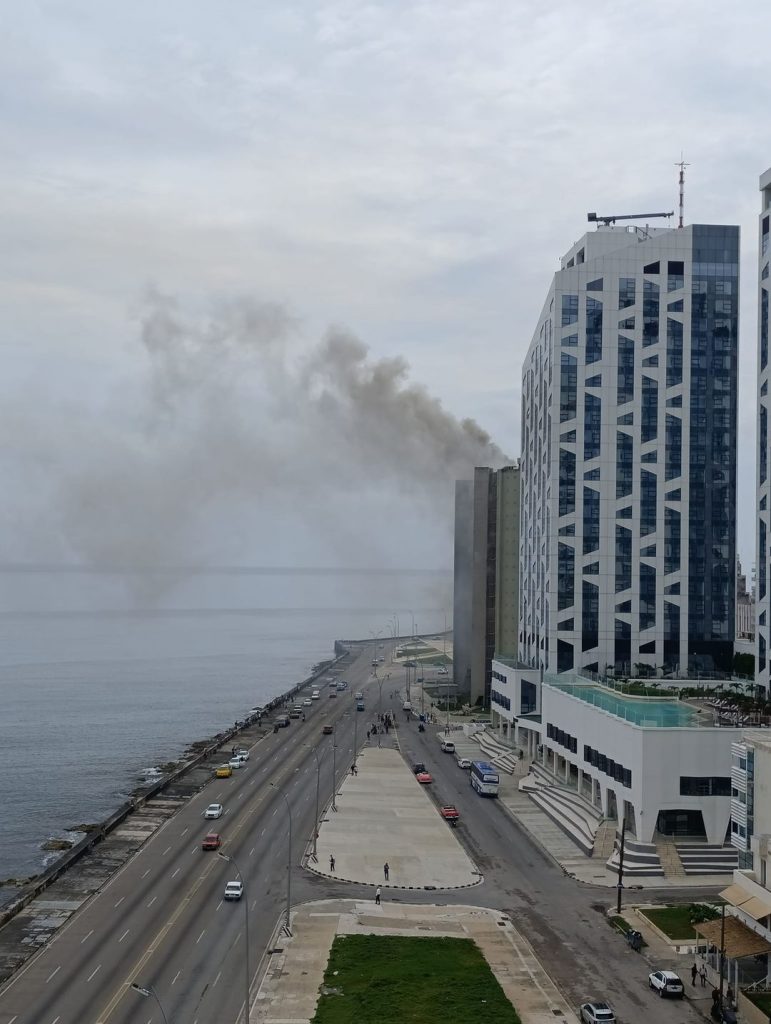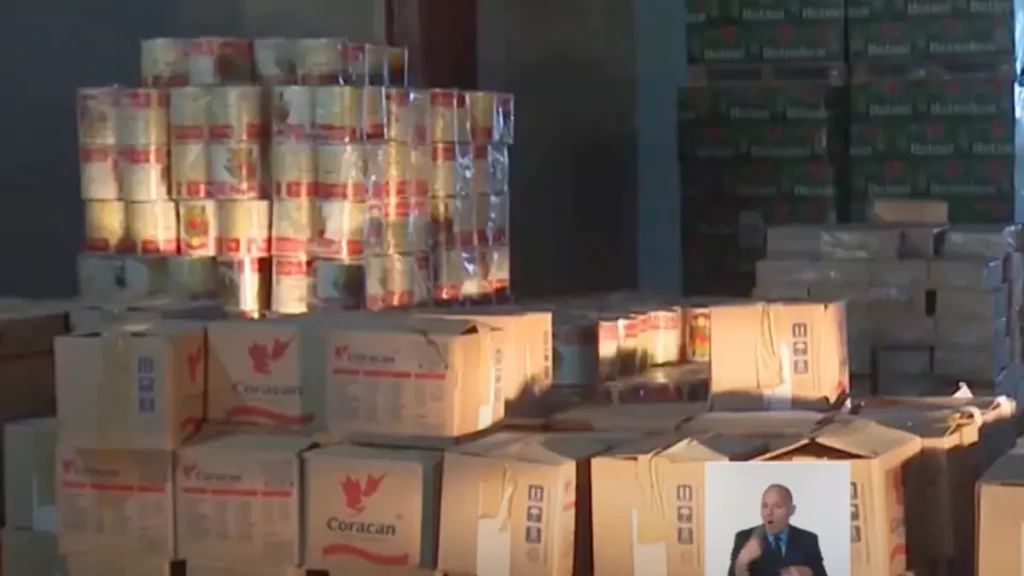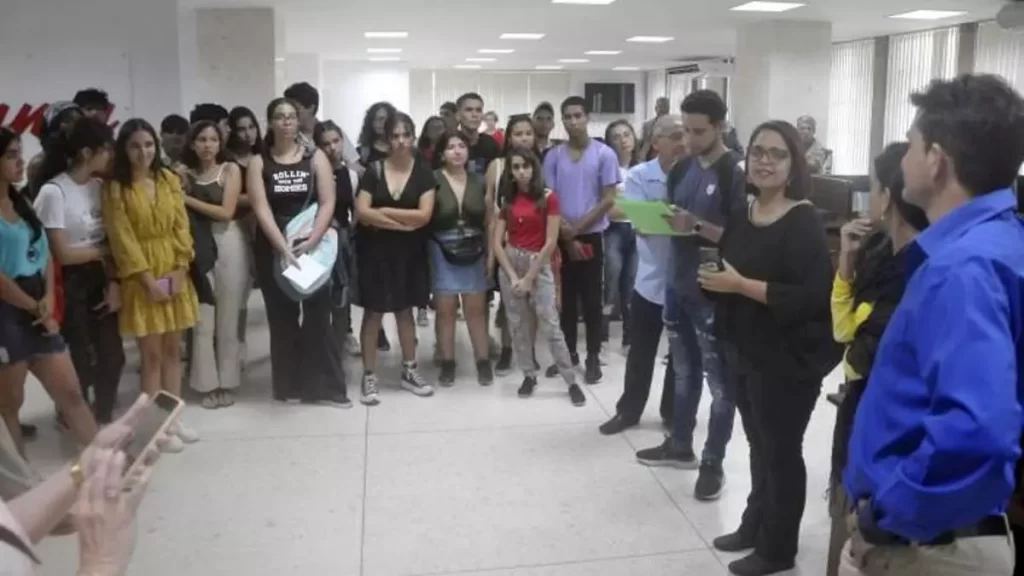“We saw that the crack that went from the roof to the balcony began to open more and the façade leaned forward,” say neighbors of the property at Consulado and Virtues Streets

![]() 14ymedio, Natalia López Moya, Havana, June 28, 2024 – The collapse of part of a two-story building, located on the corner of Consulado and Virtudes streets in Centro Habana, has set off alarms among the residents of one of the Cuban capital’s neighborhoods most affected by the deterioration. In the area, which is very busy and densely populated, there are numerous tenements and houses on the verge of collapse.
14ymedio, Natalia López Moya, Havana, June 28, 2024 – The collapse of part of a two-story building, located on the corner of Consulado and Virtudes streets in Centro Habana, has set off alarms among the residents of one of the Cuban capital’s neighborhoods most affected by the deterioration. In the area, which is very busy and densely populated, there are numerous tenements and houses on the verge of collapse.
“We saw that the crack that went from the roof to the balcony began to open more and the facade leaned forward,” said a neighbor who witnessed, from her window, the fall of the first fragments of the wall, speaking to 14ymedio by phone. The woman lives across the street, in the building where the Havana Musical Theater used to be, which has fallen into ruin and become a public trash dump since it closed in 1989.
The building, built around the 1920s and in a neoclassical style, has experienced a lack of general maintenance
Vehicle traffic is closed in the area, both on Virtudes and on Consulado Streets, but “there is no good signage so that people do not walk here and you can see people passing by the rubble that fell, that is very dangerous,” she laments. The neoclassical style property, built around the 1920s, has suffered a lack of general maintenance and successive changes.
In addition to wooden platforms — colloquially called barbacoas [barbecues] — built in the rooms to increase the horizontal space, wooden or brick partitions have been added to divide the rooms. “A few years ago, several balconies collapsed, there were serious leaks and in the same corner you could see that the construction was very damaged, it was very damp.” continue reading
With the rains of the last few days, “the crack became wider and we all knew what was going to happen,” the woman stressed. On social media, other residents in the vicinity have lamented the danger that surrounds them. One of these is Yaumari Morales, who lives a few meters from the collapse: “it is on the same corner of my house where many people walk, where my son walks to get bread. How sad how this country is falling into pieces.”
“Now the garbage that is always on this corner has mixed with the rubble, we are going to need a fire ladder to enter our house,” laments another resident of the Havana Musical Theater building. Under its balconies, the mountain of waste borders the entire property and mixes with the pieces of wall that have fallen from the house directly in front.
The rains that have begun to intensify over the Cuban capital as the afternoon progresses this Friday have paralyzed the demolition work at various times
The rains that have begun to intensify over the Cuban capital as this Friday afternoon progresses have paralyzed the demolition work at various times. For the weekend, showers and possible intense precipitation are also forecast in western Cuba. A tropical wave that advances through the Atlantic towards the Caribbean Sea also keeps Havana residents in suspense.
The intense storm of recent days has caused dozens of building collapses in the Cuban capital, one person dead and several injured. Last Friday, an official source, who preferred anonymity, informed this newspaper that 19 partial collapses had occurred in the city due to rainfall, but in the following days the number continued to grow.
Last Sunday night, one of the most emblematic buildings in the capital, the Manzanares Building , suffered an internal collapse. Around 9:20 pm, a skid collapsed, dragging in its wake the entire bathroom and kitchen area of the lower floors, at number 912 San Francisco Street, one of the entrances to the apartment complex.
Just two days ago, it was the historic Casa de Doña Luz Godínez de Diago, the 19th century building located at number 1360 Calzada del Cerro, which suffered the collapse of part of its façade and roof.
____________
COLLABORATE WITH OUR WORK: The 14ymedio team is committed to practicing serious journalism that reflects Cuba’s reality in all its depth. Thank you for joining us on this long journey. We invite you to continue supporting us by becoming a member of 14ymedio now. Together we can continue transforming journalism in Cuba.

















